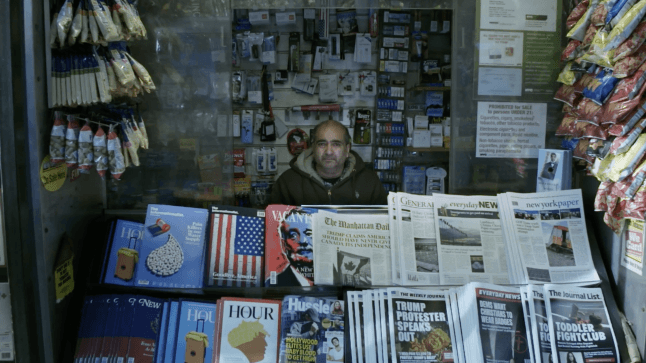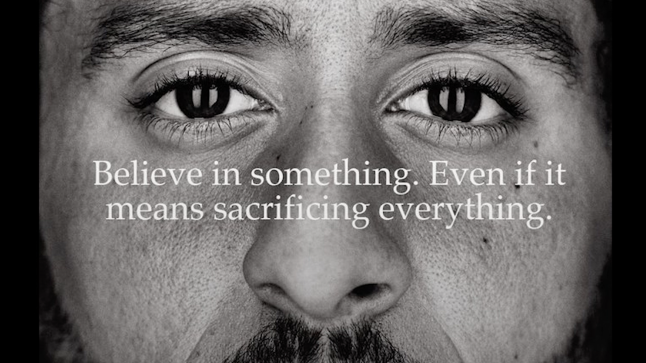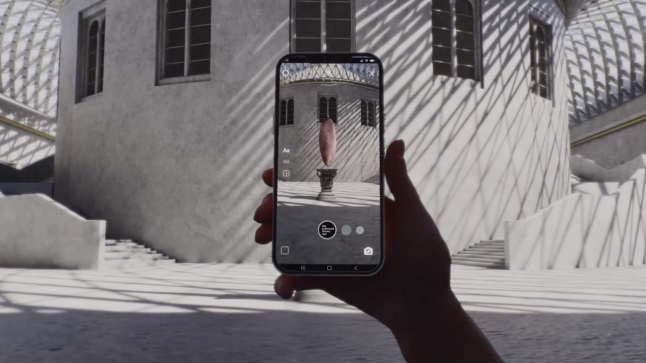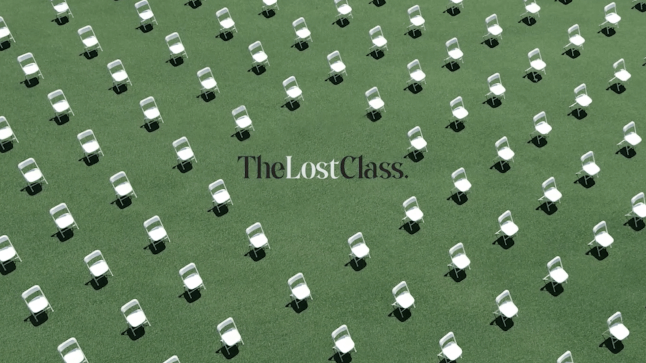TRUTH
A world full of
fakery masquerading as truth.
Our second key word is “truth”. The anemone is a perennial that grows widely along the Mediterranean coast. One type of anemone is the “white anemone”, which in the ‘language of flowers’ means “truth”. Perhaps this link is appropriate because white is often associated with being “unblemished” or “lacking lies”, in other words expressing “truth”. However, in the natural world there is no such thing as “pure white”. The color white actually looks that way because white objects reflect all of the different colors that reach the human eye, and therefore it is not actually possible for a truly “white” object to exist. Despite this, we frequently use phrases such as “pure white such and such” to mean that something is pure and unsullied. It is worth noting here that the anemone has actually gone through frequent selective breeding, resulting in 10 different varieties in Japan and hundreds of different varieties around the world. While we would like to have a single version of “truth”, in the modern world many people feel that is acceptable for each individual to write their own version of truth and we should accept that as “diversity”.
The polar opposite of “truth” is fake news, and it is a long time since that term came into everyday language. As the name implies, “fake news” refers to information, which can be spread by the news media or social media, made up of information that differs from the truth. Rather than referring to incorrect news reports resulting from a misunderstanding, it is more accurate to understand “fake news” as “false news” that has been spread deliberately. Or, in some cases, rather than completely “false news”, it is news that has been cut to fit a certain agenda or which is expressed in such a way as to deliberately produce misunderstanding. Recently, we are even seeing the rise of “deep fakes”, which refers to fake video synthesized using artificial intelligence (AI). In the past, the very fact that something was reported by the news media was taken as a guarantee of its reliability, but since the widespread growth and adoption of social media, we can receive information from various different sources, and now, with anyone at all able to widely disseminate information, it has become extremely difficult to properly judge what information is true and what is false. Even well-known media may produce incorrect reports after being fooled by a fake information source. We also frequently see allegedly reliable news sources sharing information that has been distorted from its original form as it passes through social media. Recently, we have seen more than a few examples of information that later turned out to be false; examples include doubts over the effectiveness of the coronavirus vaccine, predictions of the possibility of lockdown in various cities, and unfavorable assessments of election candidates. However, in most cases, the truth only comes to light after people have shown an interest in the false information and discussed it endlessly with their friends and associates, or taken some action based on that information, leaving people who have already spread the rumor in the difficult position of having to quickly shut their mouths in something of a panic. This is what happens: after people have, without maliciousness, passed on incorrect information, they find that they have taken part in spreading falsehoods. According to a survey by the Japanese Ministry of Internal Affairs and Communications, 72.0% of people said that they had either “seen or heard” rumors, fake news, or misleading information about coronavirus infections, with that percentage increasing the younger the respondent.
Fake news also spreads through connections between individuals. For example, since the outbreak of the coronavirus pandemic, the topic of “romance scams” is frequently featured in the news. These scams, which we see with a relentless regularity, involve people on dating apps or social media getting to know someone online who they have never met directly in real life, eventually getting conned out of large sums of money. During the 12 months to March 2022, the number of people seeking official advice on these scams rose to 40 times the pre-pandemic level. These scams also became more frequent outside Japan, with the US Federal trade commission recording approximately $547 million lost in romance scams in the United States during 2021 (approximately ¥74 billion), 2.7 times the 2019 figure. Reports also show approximately $56 million (approximately ¥5 billion) in losses from romance scams in Australia during the same year, roughly double the 2019 statistic. While the victims may have been fooled by the smooth talking of the perpetrators, we can understand how this type of crime can spread by taking advantage of the way that transactions in our current society assume the other party’s intrinsic morality, whether we are settling payment for our shopping or transacting consumer-to consumer in an online marketplace. We find ourselves wishing it were the reports of these scams that were fake news.
You may know the popular animated Japanese mystery series In/Spectre*1, in which the main character uses her detective powers to explain various incidents involving the supernatural monsters existing in our world, eventually convincing the monsters with her theories. One character’s line says “once a rumor has spread, then even if there is a true, rational explanation, it is difficult for people to accept. If the rumor seems more real, and even if it is a little contradictory, the fiction can take the place of the truth”. I think that this quote fits perfectly with the influence of fake news on social media. If people start to prioritize how easy it is for them to tell a story and how convincing they find it, rather than the actual truth, then even if the untrustworthiness of the information source is explained repeatedly, it may be impossible to adjust people’s behavior.
- *1 :
- A series of mystery novels by author Kyo Shirodaira, published by Kodansha in 2011. A mystery series, it revolves around the adventures of a young girl who is actually a goddess capable of harnessing the power of the spirit world, and a man with the power of immortality. Winner of the novel category at the 12th Honkaku Mystery Awards (for Japanese detective fiction) in 2012.
However, it is true that we may sometimes also see attempts to thoroughly discredit false information. The Japan Fact-check Center (JFC) is an NPO that specializes in checking facts. Through their activities, the JFC aims to maintain and improve the integrity of online debate. They perform independent analyses of widely available online news that may confuse public opinion, including the doubts about the coronavirus vaccine I referred to a moment ago, and rumors about internationally famous people, announcing whether the information is accurate or not. As an individual, after hearing or seeing information that you find extremely concerning, accessing this site to confirm its veracity is a useful way of maintaining your psychological balance.
However, Japan seems less prepared to deal with fake news than other countries. Including the above Japan Fact-check Center (JFC), there are only five fact-checking websites in Japan. This is quite clearly fewer than the number of fact-checking sites in the major nations including the 78 such sites in the United States. According to research by the Nikkei Shimbun, a Japanese newspaper, Japan is the Asian country with the lowest proportion of people with awareness of the appropriate fact-checking methods we can use to tell true and false information apart. With the volume of fake news expected to increase in future due to the growing influence of generative AI, we must further increase our media literacy.
Among the members of Cannes Lions, we are trying to move in the opposite direction, through increasingly frequent efforts to eliminate fake news or to raise public awareness of these matters through various gimmicks, in the positive sense of the word. We are able to roll out these campaigns now precisely because public awareness on the nature of fake news has grown. Some of these efforts are introduced below.
The first example is a 2018 example from the Columbia Journalism Review (CJR), a magazine for professional journalists which is produced by the graduate school of journalism at Columbia University.
The Fake Newsstand


In 2016, Donald Trump won the United States presidential election, and one reason for that victory is said to be the spread of damaging fake news about his opponent Hillary Clinton. Two years after the election controversy, prior to the midterm elections of 2018 that would measure the public’s opinion on President Trump’s record, CJR created the Fake Newsstand, believing the time was right to stress once again the importance of accurate information, and call on US voters to avoid creating another election campaign that would be mired in rumor.
A fake newsstand was set up. Newsstands are commonplace in the United States, selling various newspapers and magazines, much like Japanese news kiosks. This newsstand showed newspapers and magazines with implausible headlines such as “President Trump claims US should not have accepted Canadian independence”, “toddlers caught in fistfight” and “painkilling compounds mixed in with drinking water”. A careful look revealed that while the newspapers and magazines on the newsstand closely resembled actual publications, the content was completely fake. The stand demonstrated how people’s attention can be completely captured by shocking headlines. Confusion results from the conflict between the trust in the media that conveys the news and doubts over the communicated content. The experience is designed to remind people of the need to think once again about how we respond to media information and convey the message that even when we see stories in the media, we must carefully assess whether the information presented is actually true.
Generally, when we encounter fake news, we encounter it as an individual. Recently, the majority of those encounters are online. While we may have a brief moment of skepticism over that news, we cannot really expect individual people to personally conduct a deep investigation into the truth of the matter. However, when fake news is presented in a real physical space, we can, from our prior experience, instinctively sense that something is suspicious and likely false. That is why CRJ decided to display this newsstand in an open, public venue. The fake newsstand featured dummy versions of more than 20 different newspapers and magazines. These were handed out free of charge. A unique aspect of the project was that inside each publication there was information on how to identify fake news. Overall, the project worked to show how easily people will take false information on board.
CJR’s research suggests that only around 30% of US adults are unable to identify fake news. In addition, while it has not been officially investigated, some research suggest that articles designed to be humorous or ridiculous are shared on social media 70% more frequently than actual news articles. This campaign also asked questions of media organizations on their responsibility to deliver accurate, fair, and trustworthy news to the public. This example demonstrates the difficulty in the modern world of finding and identifying the “truth”.
The fake newsstand was sited at the intersection of 42nd St. and 6th Avenue, one of the busiest intersections in Manhattan, meaning that several 100,000 passers-by must have seen it. Through PR campaign, the project was covered by more than 300 media in 100 different nations, reportedly reaching 2 billion people. In today’s world, the prevalence of social media means that if information is released in an appropriately designed way, that information will naturally pass through various channels to reach a large number of people. The Fake Newsstand is a great example of how the mechanisms that see fake news spread quickly to become the topic du jour can conversely be harnessed to encourage the self-propelled dissemination of specific, targeted information.
News full of lies and speculation spreads fast. That is exactly why one misstep can result in a company finding itself caught up in a damaging debate. However, an increasing number of activities are underway with the aim of how many facing the “truth”, capturing its essence, and clarifying where the real debate should lie, presenting these matters afresh to the public. As we mentioned in Chapter 1, a growing number of companies are launching brand activities that are designed to embody the company’s purpose. Let’s first take a look at a pioneering example of this PR strategy, the Nike Dream Crazy campaign from 2018.
Dream Crazy


This campaign was launched to celebrate the 30th anniversary of the now universally recognized tagline JUST DO IT. However, Nike took the 30th anniversary campaign in a direction that no one was expecting.
The campaign was led by American footballer Colin Kaepernick, formerly of the San Francisco 49ers. Kaepernick began kneeling instead of standing when the United States national anthem played before American football matches to protest against racial discrimination, including the shooting deaths of Black people by police. In the United States, the national anthem is sung, and the national flag raised at various events to show respect to the nation, and at such times everyone is commonly expected to stand. This is the custom at numerous sporting events. As athletes are supposed to take the lead in standing, the refusal of an athlete, what’s more a star, to do so, was seen by some people, including President Trump, as extremely insulting. Whether or not it was the result of political pressure remains unclear, but the NFL agreed with President Trump and started obliging athletes to stand for the national anthem, where previously it had only been custom. This requirement became a matter of controversy across the United States.
After the end of the 2016 season, these events led to the San Francisco 49ers canceling Colin Kaepernick’s contract. Even after he became a free agent, Kaepernick continued to protest. Other teams, watching the reaction of the president and the NFL, also chose not to hire him. However, Nike chose to cast Kaepernick, who had been de facto banned from the NFL, as the face of their campaign. This was a risky move for Nike, as the company has a close relationship with the NFL, and the company’s founder Phil Knight, was reportedly originally against the move.
The campaign, once it began, immediately split the US in half. A #boycottNike hashtag trended on Twitter (now ‘X’), some people even recorded video of themselves burning Nike sneakers. President Trump, posting on Twitter, wrote “What was Nike thinking?”, and Nike’s shares plunged. However, support for the campaign, centering around media organizations and millennials, quickly grew, and the wind soon changed. The stock price recovered, before eventually going onto reach the company’s highest ever price, with the company’s sales also rising higher, recording a 31% increase. The Dream Crazy campaign went on to win a large number of awards including two Grand Prix in the categories of entertainment and outdoor at the 2019 Cannes Lions.
It's worth noting that Nike’s Dream Crazy, as well as the 2023 #KeepTheGrey and #TurnYourBack campaigns from Dove, were created by taking controversial issues that were causing, or looked likely to cause a debate, and combining those issues with the company’s own brand story to release a new story. By linking the presentation of the brand to the truth inherent in the news, anchoring it to reality, they were able to harness the opposing positions over the issue to energize the debate. In Nike’s case, Nike positioned itself against the NFL and the President, whereas Dove positioned itself against the television station that sacked the newscaster, and also against tiktok. Rather than taking a “self-centered” stance that focuses solely on the company’s own view of its own position in its own industry, these companies instead decided to clearly state their own position on issues of public interest, in their role as a corporate citizen. While advertising is one way in which companies highlight their own image, a campaign accompanied by real action immediately produces a sense of reality. By creating a new field of communication that one could say fuses aspects of advertising and journalism, companies are able to involve society in their campaigns, and involvement that includes consumers both for their position and against their position and consumers both with and without a touchpoint with the company. If we think about it calmly, we could argue that keeping one’s hand out of the fire is generally the best policy, but it does seem as though diving right into the heart of the issue, and attempting to “coordinate” an appropriate discussion, while infusing the company’s own position into the topic, is becoming a new, and affective means of communication at a time when simple advertisements are no longer having quite the same impact. However, while saying that, it is clear that a not inconsiderable degree of fortitude and skill is required to make effective use of this technique.
Recent news, we are not only seeing companies attempt to hitch their own advertising campaigns to the news, we are also seeing a new technique by which companies expose or create new truths as if they were themselves journalists. Examples include the 2023 “Missing Matoaka” campaign, “The Unfiltered History Tour”, and “The Lost Class”, which both won various awards in 2022.
Let’s take a brief look at these campaigns, starting with “Missing Matoaka”, the award-winning campaign from 2023.
Missing Matoaka


According to Amnesty International, indigenous women have a 16 times higher probability of being murdered than women of other ethnicities. Furthermore, four out of every five indigenous women experience violence at some point in their lives. In a bid to address this issue, the online magazine “Muskrat Magazine” launched its “Missing Matoaka” campaign.
Muskrat Magazine, an online magazine launched in Toronto, Canada in 2010, features articles on topics including indigenous literature, art, and culture. The magazine wanted to highlight its position that current, common perceptions of indigenous women are completely different from the actual reality, and that this was due to factors including the development over many years of an erroneous worldview, as well as the way in which these stories are shared. The magazine then identified the Disney movie Pocahontas, which is known around the world, as a long-standing symbol of a warped view of indigenous women, a work full of misunderstandings and stereotypes. Muskrat Magazine argued that the portrayal in the Disney story of Pocahontas exacerbates frequently repeated misunderstandings that have existed around the world for many centuries, namely that “indigenous women, more so than non-indigenous women, are sexually available, and that they are, from a racial and historical perspective, without value.” This observation led the magazine campaign to compare the actual story of Pocahontas to the tale that was created by Disney.
Missing Matoaka is based on a simple idea: the recording of a new alternative audio track on top of Disney’s Pocahontas film. The alternative audio track is used to tell the true stories that indigenous people have told down to generations. To create the track, indigenous authors rewrote each word of the script to create a new script that synchronized with the original. Indigenous actors then re-recorded these words. The new audio also used songs written and performed by indigenous artists. The resulting film is simply the original Pocohontas with new narration, new dialogue, and new background music. The film ends with the tagline “When you change the narrative you change the future.” The campaign not only communicates the truth about Matoaka, it also corrected the misunderstanding and values expressed by the original Pocohontas film.
Muskrat Magazine also made sure they followed copyright law. While you could call this a battle between two sides, the side launching the attack is in the far inferior position. Scriptwriters created a new script by looking at the original film and changing each individual line. In keeping with copyright law, they did not use a single line of the original dialogue. The scriptwriters also thought about how the lip-synching would look, carefully choosing each individual word. If you watch the new version, you can see that the dubbing is extremely high-quality. The project was held in very high regard by One Show (which, like the Cannes Lions, is an influential advertising award) showing the way in which it fulfilled social mission while also creating an emotional impact through its use of the latest technology, and high quality production, all of which combined to create an impact that goes beyond a simple focus on generating a short-term buzz.
The project was not only featured on primetime media across Canada, it was also introduced by news media in the United States and across the world, reaching more than 114 million people in its first week. The campaign achieved significant results with indigenous leaders from the state of Ontario, the Native Women's Association of Canada, and educators across Canada asking for permission to share Missing Matoaka with regional communities and with students, recognizing it as educational material that immortalizes the truth.
Our next case study is the “The Unfiltered History Tour” from 2022. It is an unofficial audio guide to the British Museum in London produced by the online media organization VICE World News.
The Unfiltered History Tour


Vice World News as a new media organization that was launched to provide global news to young viewers around the world. Vice began as a free newspaper covering skater and youth culture on the West Coast of the United States. Its content was sometimes rather extreme. After it became a subsidiary of “i-D magazine” in 2012, the size of the company grew. The objective of the campaign is to “cover topics that are usually difficult to report on (such as colonialism), positioning Vice at the forefront of those conversations, so as to increase its audience by reaching those who share its outspoken positions”. Considering the overseas edition of Vice we used to read early in the 2000s, my first impression was “I’m surprised they’ve taken this position”, but if you look closely, you can see that their sharp-tongued stance has not changed. The title on their entry sheet is “The British Museum is the world’s largest receiver of stolen goods”. When I saw this rather sarcastic headline, I was relieved to see that they have not changed at all!
According to Vice, the British museum’s collection of more than 8 million objects consists almost entirely of items that may have been stolen from Britain’s colonies. While some countries are requesting the return of items in the collection to the country of origin, the British Museum is refusing those demands. The “Unfiltered History Tour” was created to pass that fact onto the public, particularly a younger audience. Younger visitors to the museum are using the tour has an opportunity to learn historical facts about how particular exhibited items came to be in the museum’s collection, and as an opportunity to think about how we should conceptualize the past.
The tour works quite simply. Visitors to the museum simply use their smartphones to scan the stolen exhibits. Using geolocation, Instagram’s augmented reality (AR) filter is then activated. This allows the visitor to listen to an expert from the exhibit’s original country explain the truth behind the stealing of the item, as well as the location that the item was stolen from. Rather than the story as told by the British Museum, the AR content presents the history as told by the robbed side. The Unfiltered History Tour’s microsite also allows visitors from around the world who are unable to go to the museum to have the same experience.
As you might expect, the British Museum does not approve of this tour. Therefore, Vice’s London team had to work anonymously, using LiDAR*2 technology to gather data. This was just part of the significant work that went into the project, with AR technicians also developing an Instagram filter based on real time weather data to match the lighting conditions inside the museum, so that the AR flexibly responded to the museum’s actual environment. The hard work paid off, resulting in not only a Gold award in the Digital Craft category at the Cannes Lions, but also Grand Prix in the Radio & Audio, Brand Experience & Activation, and Social & Influencer categories.
- *2 :
- LIDAR is an abbreviation of Light Detection And Ranging. This technology is used for measuring the distance to objects and the shape of those objects by analyzing the information contained within the light of lasers reflected back from the object.
More than 100,000 people experienced The Unfiltered History Tour. According to a YouGov*3 poll taken a few weeks after the tour began, 59% of British people said that the “Elgin marbles,” which were taken from the Parthenon (one of the items included in the tour), do belong to Greece. The campaign achieved notable results, with 18 million recorded impressions, a 49% increase in Vice’s total Instagram impressions, and a 40% increase in TikTok followers.
- *3 :
- YouGov is an international market research and data analysis company based in the UK, working principally online. While the company’s headquarters is in the UK, it operates around the world in Europe, North America, the Middle East, and the Asia Pacific. The company collects high-quality consumer data from the more than 7 million people around the world who participate in its YouGov panels.
The Vice campaign and the Missing Matoaka campaign, which we mentioned just now, both produced significant results by presenting a new truth to counter the prevailing, one-sided values told by the British Museum and Disney, respectively, greatly changing the perspective of the viewer. Furthermore, as you might expect from projects that were recognized in the Radio & Audio category, the way in which the teams hacked existing platforms to present the campaign was extremely skillful. The voice campaign was built on British Museum exhibits, and the Muskrat Magazine campaign was built on Disney footage, as venues for their respective presentations. In addition, by creating an axis of conflict to provoke debate, and putting forward new truths for comparison with previously accepted truths, these campaigns were able to create a bigger discussion and generate a strong impact. While some people may think it impossible to throw themselves so deeply into such controversy, and while I understand that position, I still think the essential nature of these campaigns can be harnessed to good effect in communication strategies.
The final campaign I would like to review is the most shocking; it is called The Lost Class.
The Lost Class


In the United States, gun violence is one of the leading causes of mortality among children and teenagers, and support for gun control is increasing. However, organizations including the National Rifle Association (NRA) spend large sums of money, sums that vastly exceed the expenditure of gun control campaigners, so for political reasons, moves towards gun control see no progress. While it may be a complex environment involving multiple stakeholders, tackling the “truth” head on should automatically reveal the action that one needs to take. Let us take a look at Change the Ref., an organization that supports gun control, and its “The Lost Class” project, which aims to expose truths that people have tried to ignore to the cold light of day.
Of the high school students who were supposed to graduate in 2021 in the US, 3,044 students were unable to graduate because they had earlier died in gun-related incidents or accidents. This campaign used shocking imagery to drive that truth home. Change the Ref. came up with the idea of a fake graduation ceremony for a non-existent school called the “James Madison Academy”. The fictitious ceremony was held entirely without students. Two prominent gun right figures, David Keene, who is former President of the NRA, and author John Lott Jr., who wrote the book “More Guns Less Crime”, were asked to speak at the ceremony. They were led to believe they were taking part in the rehearsal for the graduation ceremony of a real school. Just like the consumers of fake news I referred to earlier, they had no idea they were being deceived. It is interesting to note James Madison is actually the name of the fourth US president, the man who drafted the second amendment to the US Constitution which mandates protection of the right to bear arms. His name was carefully chosen for the fictitious school to help remove any doubt the invitees might have had about the event.
Having been told it was a rehearsal, the two invitees began to make their speeches in front of 3,044 empty chairs. Without realizing they were being tricked by key figures in the gun control movement, they wished the students who were no longer alive due to gun violence all the best for their futures. This remarkable, ironic scene, was recorded, edited, and immediately distributed across the US. Images were shared widely online and by the news, directing people to the related website. The website contained detailed information about “The Lost Class” and gun violence in the United States, while also calling on website visitors to sign a petition against gun violence which in the end collected 40,000 signatures.
The wide media exposure sparked by the project, including social media, reached 1.4 billion impressions, with mentions of Change the Ref increasing by 21 times in two weeks. We should note that Change the Ref’s lead organizer Manuel Oliver lost his 17-year-old son in a mass shooting.
The project sparked much debate, including disagreement with the appropriateness of misleading the gun rights advocates and suggestions that the project might actually deepen divisions. While people in Japan, where the culture revolves around “cherishing harmony” may find it difficult to accept the use of these techniques to reignite stagnated debates, there is much we can learn from these creative methods of increasing an issue’s visibility. The 3,044 empty chairs laid out in regular rows, sitting on a green lawn, under the blue sky, may resemble a cemetery. Seeing just how many students lose their lives to gun violence from a single school year is enough to leave a person speechless. It was in that somber venue that the gun rights advocates gave their upbeat speeches. This contrast felt like a real life version of the satirical cartoons many media enjoy publishing, adding to the irony of the situation. It is difficult to imagine the number 3,044, but setting out the empty chairs in this way made it instantly easy to imagine. In fact, it was likely the visual impact of The Lost Class that led to the project going viral. Now that social media exists as a means of rapidly disseminating information, clever ideas for the visual presentation are becoming more and more important.
There is only one "truth". However, from the campaigns we have studied so far, we can see that the truth does not always guide people’s behavior. One can go further to say that the nature of the “truth” depends on people’s position, and that, with the passage of time, the truth may change, or at times become hidden. That said, if we are looking for signposts to guide our lives, then one can assume that continuing to search for the truth can never be a waste of time. We can make forward progress into the realm of truth via the entry points we can find wherever different opinions and debate leads to some common ground. We must never give up, avoiding or abandoning the issue. The determination to search for and reveal the truth, and the act of doing so, is without doubt the driving force behind new connections, and it has the ability to achieve powerful results.
So far in this chapter, while I have introduced various examples of successful communication in advertising, it is also true that attempts to uncover the truth can frequently result in the revelation of extraneous related matters, leading then to other unproductive debates. While it is important to pursue the truth, we should look critically at any unnecessary commotion that seeks to find smoke where there is no fire, in the manner of gossip-swapping about celebrities. While it is possible to argue that such activities can come under some definition of journalism, it is a problem when things go too far or end up debating the wrong issues. While it is a good thing for companies to set out their corporate purpose, seek to lead society in a beneficial direction, and engage in activities that focus on social issues, it is not acceptable for media to go overboard in provoking controversy due to an obsession with creating conversation topics. It is also true that society is in recent years making strong demands for companies to engage in brand activism. When making an effort to get involved in a particular cause, companies may find the initial efforts to do good blocked by their inexperience in the field or by criticism of their past failures. I would suggest the best way for companies to move forward is to always keep in mind that their lodestar should always be the overall betterment of society, and that they should act without haste, without becoming overly extreme, and without lasering in on a particular objective with a self-centered kind of virtue that ends up excluding other people related to the company.
Finally, I would like to take a look not at the activism that we are seeing more of in recent years, but rather at examples of campaigns to reveal “truth” that have until now had remained hidden.
The first of these is an advertising campaign from the Middle East/North African region. This campaign, created by Adidas, was called the “Liquid Billboard”, and it was designed to increase the opportunities that women have to freely enjoy swimming in public places.
This campaign, which won the Cannes Lions Grand Prix in the media category in 2022, also won the Grand Prix at Adfest, the largest advertising festival in Asia. In terms of visual impact and approach, this campaign has creative similarities with The Lost Class we looked at just now.
Liquid Billboard


The inspiration for the campaign comes from data suggesting that 32% of women worldwide are reluctant to swim in front of other people, a figure that rises to 88% in the Middle East. In societies with no common practice of swimming, or wearing a swimming costume, it can be difficult for women to freely enjoy swimming as a sport or as a hobby. Often, in our society, we think of water in connection with an image of “freedom”. However, in these regions, cultural considerations, or a lack of body confidence may produce obstacles and restrictions.
To promote its a new, inclusive swimwear, which anyone can use, irrespective of body shape, ethnicity, swimming ability, or religion, Adidas built a swimming pool on a beach in the shape of a billboard. The structure was five meters high, with the three-meter deep pool containing 11,500 gallons of water. The installation was opened to the public as a pool that women could swim in freely. The pool included a special underwater camera that captured the experiences of all the women who use the pool, turning it into an original digital poster, which was then live-streamed to a digital display in Dubai’s largest mall. While, previously, it was only really athletes and models who were filmed moving through the water, the digital display gave many people the opportunity to see a variety of different women proudly enjoying themselves in their swimwear. This campaign undoubtedly had an instant, pivotal impact in removing the aversion women felt over swimming in public.
The successful broadcast of a digital display in Dubai’s largest mall showing images of women actively enjoying themselves in a huge tank-like swimming pool set up on the beach is another dynamic example of visualizing a concept which could be applied in numerous other ways. The significance of the campaign lies in the way that it reveals and shares the “truth” that many women held a deep-seated desire to swim in this way. When a group comes together, thoughts that one cannot reveal as an individual can coalesce to become a force for social change. This campaign effectively provided an opportunity for such a groundswell to take place.
One question we can ask here is how members of the public react to and feel about a company that tries not simply to push a one-sided message, but tries rather to take the decision to create a concrete message together with the members of the public who are also the targets of the messaging. In other words, this campaign is firmly grounded in the concept, which comes from public relations, of weaving the recipients of information into the information narrative itself. I have to admit that I’m rather jealous of the skill with which that was done. The campaign reached 350 million people in more than 60 countries, with social media engagement rates of 17.7%.
The second example of “revealing your truth” I would like to look at is the “Are you press worthy?” campaign through 2023, a project from the Columbia journalism with you (CJR) who you met earlier as the organizers of the fake newsstand.
ARE YOU PRESS WORTHY?


In the United States, more than 40% of missing persons are black. Less than one-third of missing persons are white women. Despite this, more than half of media reports on missing persons relate to missing white women. The AreYouPressworthy.com microsite was launched to address that disparity and promote even-handedness in reporting.
The website allows site visitors to input their age, place of residence, race, and gender so as to compare their details with a database of 3,630 typical news articles on missing persons and inform people of the media coverage they would receive if they were to go missing, including the likely volume of articles, the respective proportions of coverage in local news and national news, the media organizations that would likely cover their disappearance, and their overall “rank” among missing persons in the media. Users of the site can also see how the situation would change if they input different information. The user experience ends with information on actual missing persons incidents that have so far attracted zero media coverage, and they can tweet about the incident and encourage media organizations to cover it. The site succeeds in creating deep personal engagement, by allowing visitors to not only research their own information, but also those of their family and friends, creating a project full of features that encourage anyone who uses it to spread the word about it.
While the website featuring the missing persons data is also extremely well designed, we should also note the slow and steady public relations activities surrounding the project that took place behind the scenes. By putting Jelani Cobb, who is a staff writer at the New Yorker, and also Dean of the Columbia Journalism School, in charge of PR, the campaign succeeded in publishing exclusive articles about the project via AP. On the first day of the campaign, AP published a special feature on inequalities in the media reporting of information about missing persons. In the end, the campaign successfully generated coverage for more than 850 media organizations around the world including NBC News, Forbes, USA Today and ABC News. Many other media figures also supported the campaign, joining in with social media posts and discussion, further sharing the topic. These renowned journalists included Tal Kopan, the Deputy Washington Bureau Chief for The Boston Globe, writer Sally Hayden, winner of The Orwell Prize for Political Writing, and Erin Real, National Correspondent for NBC News and CNN.
The campaign eventually generated more than 1.12 billion PR impressions, with more than 220,000 people measuring how “pressworthy” they were, and more than 7000 people sharing their results on social media in the first week alone. Later, several hundred journalists joined the campaign on Twitter (now X), resulting in some media organizations deciding to review their standards for reporting on missing people of color.
Currently, brand activism requires companies to clearly declare their own stance and act accordingly. It is important to clearly declare their position to both media members and the public. As we move forward, we will see companies being asked to not simply set out their thoughts on their own products, but rather create forums for discussion, involve other people, and act as a conduit for more vibrant debate. In other words, companies are not expected to simply push forward their own position, but rather bring third-party opinions into the debate arena. As you can see from the examples of this approach I have introduced so far, we are likely to see an increasing number of companies encouraging people to argue the pros and cons of certain issues, placing themselves within that process to then try and find their own answers.
It Is worth noting here that the criteria for global advertising awards are in recent years shifting towards an emphasis on diversity, with strong moves towards respect for the cultural backgrounds of various different nations. Over the past few years, people have placed importance on the issuance by corporations of universal, widely accepted messages; but people are now starting to think more highly of campaigns that identify issues that exist within a particular region, taking account of the sense of values and ways of thinking that exist within a particular cultural sphere, and responding to those issues within their campaigns. That is why creatives should be able to refresh their output simply by understanding examples of prior campaigns and designing their communication based on an understanding the differences between various nations, making use of, for example indexes of cultural value such as Hofstede’s*4 six dimensions of national culture.
- *4 :
- Dr. Geert Hofstede was a Dutch social psychologist. He harnessed 50 years of research to produce a framework for understanding cultural differences, identifying the following six different dimensions that shape values in different cultures: power distance (strength of hierarchy), collectivism/individualism, femininity/masculinity, avoidance of uncertainty, short term-orientation/long-term orientation, and indulgence/restraint, the latter referring to how people enjoy their lives (and the acceptance of a subjective view of happiness).

REMEMBRANCE
REMEMBRANCE
REMEMBRANCE
REMEMBRANCE
REMEMBRANCE
NEXT CHAPTER


Common Memories Provide
Strong Points of Connection.